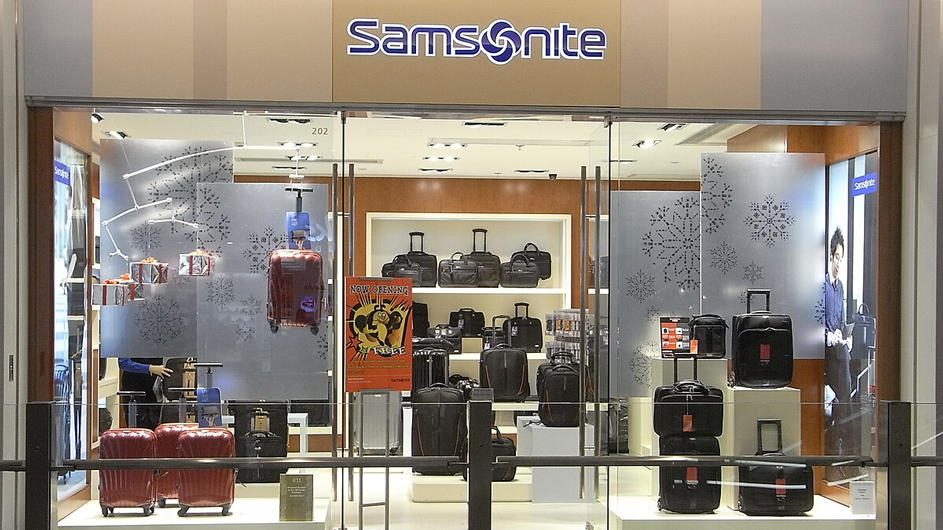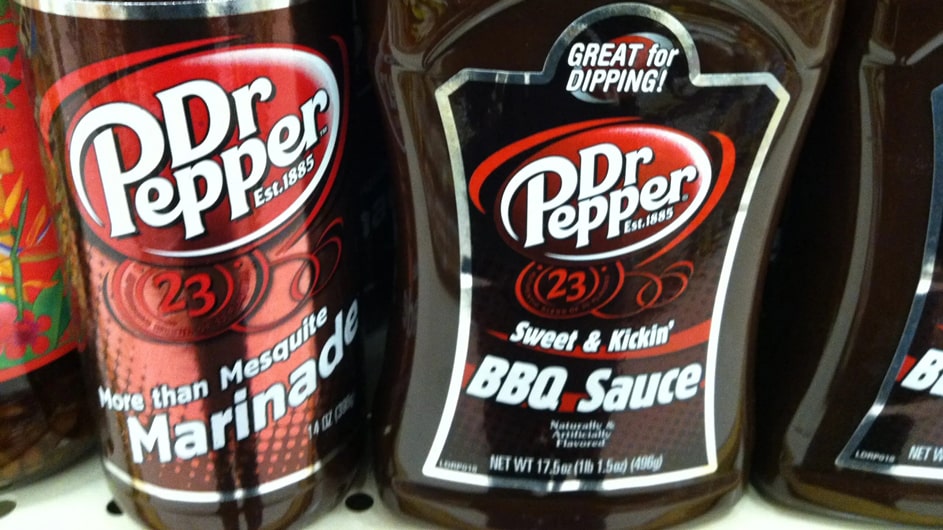
- Definition of Brand Dilution
- Brand Dilution vs. Brand Evolution
- Impacts of Brand Dilution on Businesses
- Sources of Brand Dilution
- Brand Dilution Examples in Industries
- Key Indicators in Measuring Brand Dilution
- Tools and Techniques for Assessing Brand Dilution
- Strategies to Prevent Brand Dilution
- Recovering from Brand Dilution
- Steps to Rebuild Brand Strength
- Successful Brand Recovery Examples
- Best Practices in Brand Management
- Wrap-Up
- Discover Tech-Driven Brand Management Solutions
Many companies undertake strategies to broaden their target audience and diversify their revenue sources to expand reach and increase revenue. However, not every campaign yields the desired results.
As a business grows, it must be careful not to dilute its brand. Even if the brand is popular, stretching it too thin too quickly can cause problems. Brand dilution can harm how people see the company and affect its profits.
When a brand’s message, look, or products become inconsistent, it confuses customers and can negatively impact brand loyalty. Finding the right balance between growth and keeping a brand strong is vital to long-term success.
This post will explore a comprehensive overview of brand dilution, covering its concept, causes, impacts, strategies to avoid it, and recovery methods.
Definition of Brand Dilution
Brand dilution occurs when a brand loses its unique qualities, value, and recognition because it is used inconsistently or inappropriately. It can confuse consumers and weaken their trust and loyalty toward the brand.
When a brand’s connection with a particular set of products becomes less clear, its overall image suffers. This usually happens when a brand expands too much beyond its original identity or introduces products that don’t resonate with its target audience.
Brand dilution causes confusion and dissatisfaction among consumers. When consumers no longer associate a brand with its core identity or a consistent set of products, its perceived value diminishes.
It can also lead to a perception among consumers that the company prioritizes profit-making over meeting the needs of its loyal customer base.
This dilution can occur when a brand extends its reach too far, straying away from what made it recognizable and desirable in the first place. As a result, consumers may become uncertain about what the brand stands for, leading to a decline in their perception of its authenticity and relevance in the market.
Imagine a renowned luxury fashion brand famous for its high-priced, exclusive clothing. The brand starts producing cheaper, mass-market items like T-shirts and hats to expand its reach and appeal to a broader audience.
While this strategy might increase sales in the short term, it risks diluting the brand’s image of luxury and exclusivity. Consumers who once associated the brand with premium quality and status may now perceive it as less prestigious and exclusive.
Brand Dilution vs. Brand Evolution
To gain a deeper understanding of brand dilution, it’s essential to grasp its counterpart, brand evolution, which involves strategic adaptations to strengthen a brand’s connection with consumers while safeguarding its core identity.
They represent contrasting paths in a brand’s lifecycle, each with distinct business implications. Brand dilution occurs when a brand’s distinctiveness and value are weakened due to inconsistent or inappropriate use, leading to consumer confusion and diminished trust.
In contrast, brand evolution involves purposeful changes that align with shifts in market trends, consumer preferences, or the company’s strategic direction.
While brand dilution can erode consumer trust and loyalty, when executed thoughtfully, brand evolution can rejuvenate a brand, enhance its relevance, and strengthen its connection with consumers.
Brand dilution often stems from attempts to capitalize on a brand’s success by expanding into unrelated markets or introducing products that deviate from its core identity. These ventures can dilute the brand’s image, leading consumers to question its authenticity and reliability.
In contrast, brand evolution involves strategic adjustments that enhance the brand’s resonance with its target audience while staying true to its core values. It may include refreshing the brand’s visual identity, updating product offerings to meet changing consumer needs or expanding into related markets that complement the brand’s existing strengths.
The critical distinction between brand dilution and evolution is their impact on consumer perceptions and long-term brand equity. While brand dilution risks alienating consumers and eroding brand loyalty, brand evolution can strengthen consumer engagement, foster brand advocacy, and drive sustained growth.
Therefore, knowing the intricacies and impacts of brand dilution can help businesses make informed decisions to protect and strengthen their brand’s integrity and market position, ensuring brand evolution and success.
Impacts of Brand Dilution on Businesses
The impacts of brand dilution on businesses are significant, affecting various aspects from overall brand image to long-term growth prospects and profitability.
Weakening of Brand Equity
Brand dilution diminishes the strength of a brand’s equity, representing the value and perception consumers associate with it. When a brand’s identity becomes diluted due to inconsistent or inappropriate use, its equity weakens, making it less compelling and desirable in the eyes of consumers.

Decreased Market Differentiation
Brand dilution blurs a brand’s distinctiveness within the market. When a brand loses its unique identity and begins to resemble its competitors more closely, it becomes challenging for consumers to differentiate between brands.
This lack of differentiation can lead to increased competition and price sensitivity, ultimately impacting the business’s market position and profitability.
Negative brand associations
Brand extensions or ventures into unrelated product categories can result in negative associations if the new products fail to meet consumer expectations.
For instance, if a renowned electronics brand introduces a line of low-quality, budget-friendly kitchen gadgets, consumers may associate the brand with poor quality or inconsistency across product categories. These negative associations can tarnish the brand’s reputation and hinder its ability to attract or retain new customers.
Reduction in Product Value
Brand dilution decreases the perceived value of the offerings associated with the brand. Due to the brand’s diluted image, consumers may resist paying premium prices for products they perceive as less exclusive or prestigious, reducing profitability for the business.
Loss of brand loyalty
Brand dilution can erode the loyalty that consumers once had towards the brand. When the brand’s identity becomes diluted or less distinctive, consumers may no longer feel a strong emotional connection or attachment to it.
This loss of loyalty can result in decreased repeat purchases and ultimately impact the business’s revenue and market share.
Brand Cannibalization
Introducing too many variations or versions of a product under the same brand umbrella can lead to cannibalization within the brand portfolio.
When consumers have too many options, they may opt for lower-priced or less premium alternatives, resulting in a decline in sales of higher-margin products. This internal competition can weaken overall profitability and dilute the brand’s perceived value in the market.
Harming the Parent Brand’s Image and Equity
When a brand extends its product line or ventures into unrelated markets without staying true to its core identity, it risks damaging the parent brand’s reputation and equity.
A brand extension may fail to meet consumer expectations or diverge too far from the qualities that made the parent brand successful. It can lead to negative associations and undermine the brand’s credibility and authenticity.
Furthermore, brand equity, which encompasses the value and perception consumers attribute to a brand, can be eroded by brand dilution.
This erosion of brand equity can result in diminished brand loyalty, decreased consumer trust, and, ultimately, reduced market share and profitability for the business.
Difficulty in Brand Repositioning
Once a brand’s image has been diluted, it becomes challenging to reposition it in the minds of consumers. Reestablishing a brand’s identity and regaining consumer trust and loyalty requires significant time, resources, and strategic efforts.
Businesses may face resistance from consumers who have formed entrenched perceptions of the brand, making it difficult to pivot towards a new market positioning or target audience.
Brand dilution has far-reaching consequences beyond the immediate impact on brand equity and profitability. It affects market differentiation, brand associations, internal brand dynamics, and the feasibility of future repositioning efforts.
By avoiding practices that lead to brand dilution and consistently delivering value and relevance to consumers, businesses can safeguard their brand image, improve customer loyalty, and sustain long-term growth and profitability.
Learn more about Brand Repositioning : What Is Brand Repositioning?
Sources of Brand Dilution
Brand dilution can stem from various sources, compromising a brand’s integrity and market position. Companies must understand the causes to mitigate risks and safeguard their brand’s success.
Brand Extensions
Brand extension or brand stretching is a common strategy for leveraging existing brand equity to enter new markets or product categories.
When executed effectively, brand extensions can enhance brand visibility, increase market share, and strengthen consumer loyalty. For instance, a sportswear brand extending its product line to include accessories like bags and hats can capitalize on its existing customer base and expand its reach within the athletic market segment.
However, brand extensions into unrelated or poorly aligned categories can dilute the brand’s identity and confuse consumers. For instance, if a famous luxury car brand starts selling budget-friendly bicycles, it might seem out of place.
Consumers could see it as a mismatch between the brand’s luxury image and the simplicity of bicycles. It might make people doubt the brand’s reputation and luxury status.
So, when carefully executed, a brand extension can enable brands to capitalize on their established reputation and consumer trust, driving growth and profitability.
However, brand extensions must be approached cautiously to avoid diluting the brand’s identity and damaging its reputation. Misaligned or poorly executed brand extensions can result in brand dilution, eroding consumer trust and loyalty.

Inconsistency
Brand inconsistency can significantly contribute to brand dilution by undermining consumer trust and eroding brand equity. When a brand’s messaging, visuals, or customer experiences lack coherence across different touchpoints, they create confusion and diminish their perceived authenticity and reliability.
Consistency in branding is essential for reinforcing brand identity and maintaining consumer confidence. It guarantees that every interaction with the brand strengthens its core identity and resonates with its target audience.
On the other hand, inconsistent branding can erode consumer trust and loyalty, as it suggests a lack of commitment to the brand’s values and identity. Therefore, maintaining consistency across all brand elements is essential for mitigating the risk of brand dilution, reinforcing brand identity, and holding consumer confidence.
Poor Quality or Misaligned Products/Services
Offering poor-quality products or services that do not meet consumer expectations can significantly damage a brand’s reputation and result in brand dilution. Consumers recognize a brand for its consistent quality and reliability, and deviations from this standard can erode trust and loyalty.
Additionally, misaligned products or services that do not align with the brand’s image or values can contribute to dilution. Consider a scenario where a well-established organic food brand introduces a processed snack line.
This move contradicts the brand’s core values of promoting health and wellness, leading consumers to question its authenticity and commitment to its mission.
So, introducing misaligned products could dilute the brand’s image and erode consumer trust, ultimately impacting its market position and long-term success.
Unauthorized Use of Brand Name
Third parties’ unauthorized use of a brand name can significantly threaten a brand’s integrity and lead to brand dilution. When products or services enter the market under the brand’s name without proper authorization, it can confuse consumers and undermine its credibility.
Additionally, if these unauthorized products or services fail to meet the brand’s quality standards or are inconsistent with its image, they can further damage consumer trust and loyalty. Brands must actively monitor and protect their trademarks to prevent unauthorized use and safeguard their reputation in the market.
Licensing
Licensing the brand to various products or businesses without strict quality control can lead to inconsistent brand experiences and dilute the brand. Every product or company associated with the brand should reflect its quality and image to maintain consumer trust and loyalty.
For instance, Nike collaborated with Apple to create the Nike+ Run Club App, which seamlessly integrated technology with sports performance, enhancing the brand’s reputation for innovation and athleticism.
However, if Nike were to license its brand to a fast-food chain for selling burgers, it could dilute its image by associating it with unhealthy eating habits and contradicting its values.
Therefore, ensuring rigorous quality control and alignment with brand values is essential when considering licensing opportunities to avoid diluting the brand’s identity and reputation.
Overexposure
Overexposure occurs when a brand saturates the market with its presence to the extent that it becomes overwhelming or tiresome for consumers. While visibility is crucial for brand awareness and recognition, excessive exposure can lead to brand fatigue and diminish consumer interest.
Overexposure can dilute a brand’s perceived uniqueness and value, making it less appealing to consumers who seek authenticity and exclusivity. For example, bombarding consumers with repetitive advertisements across multiple channels without offering meaningful or relevant content can result in brand overexposure. It would lead to decreased consumer engagement and brand resonance.
Negative Publicity
Negative publicity, such as scandals, controversies, or unfavorable reviews, can harm a brand’s reputation and lead to dilution. When a brand becomes associated with negative events or perceptions, it erodes consumer trust and damages brand credibility.
Negative publicity can spread rapidly across social media and other online platforms, increasing its influence and complicating brands’ ability to control the narrative.
For example, a food brand facing allegations of using harmful ingredients in its products or engaging in unethical business practices may experience a significant decline in consumer trust and loyalty. It would result in brand dilution and potential long-term damage to its market position.
In conclusion, the causes of brand dilution represent significant constraints for businesses aiming to maintain a solid and reputable brand presence in the market. However, learning from success stories helps companies devise strategies to minimize risks and protect their brand’s integrity.
Brand Dilution Examples in Industries
Examples of brand dilution illustrate experiences where renowned brands have deviated from their core identity or ventured into unrelated markets. These instances often highlight the challenges brands face when expanding their product lines or entering new territories without considering brand equity and consumer expectations.
The following renowned brands have encountered instances of brand dilution which offer valuable lessons:
Harley Davidson
Harley Davidson, famous for its motorcycles and associated apparel, ventured into the fragrance market with a perfume line. Unfortunately, this move didn’t align with the brand’s rugged and adventurous image, causing the perfume to perform poorly in the market.

Introducing an unrelated product like perfume diluted Harley Davidson’s brand identity, undermining its reputation and confusing consumers about its core values.
Google’s launch of Google Glass in 2013 resulted in brand dilution. Wearable computers have failed to gain widespread adoption due to their high price and limited functionality.
Google Glass failed to align with Google’s brand identity as a provider of innovative and user-friendly technology products, leading to diminished brand perception and consumer interest.
Gap
Gap, a well-established clothing retailer, expanded its product line to include children’s clothes. However, the children’s clothing line failed to align with Gap’s reputation for quality and style.

The lower-quality and cheaper offerings deviated from Gap’s brand identity, diluting the brand’s image and consumer trust. This misstep underscored the importance of maintaining brand consistency across all product categories to avoid dilution.
Amazon
Amazon’s attempt to enter the smartphone market with the Fire Phone resulted in brand dilution. The phone failed to meet consumer expectations and fell short compared to other smartphones in the market.
The Fire Phone’s lackluster performance tarnished Amazon’s reputation for innovation and excellence. It highlights the risks of extending a brand into unrelated product categories without sufficient differentiation or value proposition.
Samsonite
Samsonite, known for its high-quality luggage, attempted to extend its brand into the fashion market. However, the transition didn’t resonate with consumers, diluting the brand’s identity.

The fashion line failed to capture the same level of success as its luggage products, leading to diminished brand recognition and consumer trust in Samsonite’s ability to deliver quality beyond its core offering.
Hewlett-Packard
Hewlett-Packard’s acquisition of Compaq led to a blending of two distinct brand identities. While HP was perceived as a high-quality brand, Compaq was associated with lower-cost offerings.

The merger resulted in brand dilution as consumers struggled to reconcile the differing brand perceptions. The failure to maintain clear brand distinctions undermined consumer trust and loyalty, impacting the success of both brands in the market.
Microsoft
Microsoft’s release of the Zune music player in 2006 fell short in functionality and market appeal. The Zune’s underperformance diluted Microsoft’s brand image, as it failed to deliver a compelling alternative to the dominant iPod.
The Zune’s failure highlighted the challenges of extending a brand into new product categories without adequately understanding consumer needs and preferences.
Pillsbury
Pillsbury, known for its baking products, introduced frozen microwave popcorn, attempting to diversify its offerings. However, this extension into a new category failed to resonate with consumers and diluted Pillsbury’s brand identity.

The product’s lack of success in the market highlighted the importance of maintaining brand focus and consistency to avoid diluting brand equity.
Pepsi
Crystal Pepsi, introduced by Pepsi in the early 1990s, was a clear soda with no flavor. Although the product struggled to establish a unique identity in the market, it failed to resonate with consumers.
The launch of Crystal Pepsi diluted Pepsi’s brand image, as it deviated from the brand’s traditional offerings and failed to capture consumer interest or loyalty.
Coca-Cola
Coca-Cola’s venture into clothing in the early 1980s resulted in brand dilution. The clothing line failed to align with Coca-Cola’s brand image and values, as the products were perceived as lacking creativity and poor quality.
The misstep undermined consumer trust in Coca-Cola’s ability to extend its brand beyond beverages, highlighting the risks of venturing into unrelated product categories without maintaining brand consistency and excellence.
Cadbury
Cadbury, renowned for its chocolates and confectionery, expanded its product range into low-end food items like mashed potatoes. This extension into unrelated categories tarnished Cadbury’s brand image and eroded consumer trust in the brand’s quality and expertise.
The venture into non-confectionery items led to brand dilution. Consumers found it challenging to reconcile Cadbury’s well-established reputation for confections with its attempt to venture into everyday snacks.

Examining examples of brand dilution underscores the importance of recognizing the various factors and circumstances that can contribute to a brand’s loss of identity and consumer appeal.
Moreover, by understanding the factors contributing to brand dilution, businesses can identify potential problems early on and employ preventative measures to mitigate risks and recover lost brand equity.
Key Indicators in Measuring Brand Dilution
Determining whether a brand has been diluted is crucial for businesses to sustain their competitive advantage and ensure sustained success in the market. By evaluating key indicators, companies can understand how much their brand identity, value, and consumer appeal have been compromised.
These signals offer valuable insights into the performance of brand management strategies and help businesses make informed decisions to safeguard their brand’s integrity and relevance. Here, we will explore critical indicators used to measure if a brand has been diluted.
Customer Perception
One of the primary indicators of brand dilution is changes in customer perception. Businesses can gather valuable feedback on how consumers perceive their brand by conducting surveys, focus groups, and monitoring online sentiment.
Shifts in consumer attitudes, sentiments, and associations with the brand may indicate potential dilution. For example, if customers start to view the brand as less innovative or less trustworthy, it could signal a dilution of brand identity.
Sales and Revenue
Another crucial metric for measuring brand dilution is its impact on sales and revenue. Declines in sales or stagnating revenue growth despite marketing efforts and product launches suggest that the brand’s appeal has diminished.
Analyzing sales data across different product lines or regions can help identify areas where brand dilution may occur. For instance, if a brand’s newly introduced products cannot gain a foothold in the market or cannibalize existing product sales, it could indicate a dilution of brand value.
Brand Equity
Brand equity, which encompasses brand loyalty, perceived quality, and brand associations, is a crucial indicator of brand strength and resilience. Monitoring changes in brand equity metrics, such as Net Promoter Score (NPS), brand preference, and customer lifetime value, can provide insights into brand dilution.
For example, a decline in NPS or a decrease in repeat purchases may indicate that the brand’s value proposition no longer resonates with consumers, leading to diluting brand equity.
Brand Awareness
Maintaining strong brand awareness is essential for sustaining a brand’s competitive position in the market. Monitoring brand awareness metrics, such as aided and unaided brand recall, brand mentions in media and social channels, and website traffic, can help assess if the brand has been diluted.
A decrease in brand mentions or website traffic may suggest that the brand’s visibility and relevance have diminished, potentially leading to brand dilution.
Competitive Analysis
Regular competitive analysis can help identify emerging trends, competitor strategies, and market dynamics that may impact the brand. Changes in competitor positioning, messaging, or product offerings relative to the brand may highlight potential brand dilution.

By examining these key indicators, businesses can comprehensively understand brand dilution and proactively address any underlying issues.
Tools and Techniques for Assessing Brand Dilution
Assessing brand dilution requires thoroughly examining various factors that may contribute to weakening a brand’s identity and market position. Several tools and techniques can help businesses evaluate the extent of brand dilution and identify areas for improvement. Some standard tools and methods for assessing brand dilution include:
Brand Equity Models
Utilizing brand equity models, such as Keller’s Brand Equity Model, Brand Asset Valuator (BAV), or Aaker’s Brand Equity Framework, can provide a structured framework for assessing the various dimensions of brand equity and identifying areas where the brand may be experiencing dilution.
These models help businesses understand the factors driving brand value and develop strategies to strengthen brand equity over time.
Brand Tracking Studies
Brand tracking studies monitor key brand metrics over time to assess changes in brand perception, awareness, consideration, and loyalty. By tracking metrics such as brand awareness, purchase intent, and consumer sentiment, businesses can identify shifts in consumer perceptions that may indicate potential brand dilution.
Consumer Surveys and Focus Groups
Conducting consumer surveys and focus groups allows businesses to obtain feedback directly from their target audience regarding their perceptions of the brand.
Businesses can delve into specific aspects of brand perception, product experiences, and overall satisfaction through online surveys, in-person interviews, or virtual focus groups. Structured questionnaires and discussion guides also aid in uncovering valuable insights that may signal early signs of brand dilution.
Market Share Analysis
Analyzing changes in market share relative to competitors can provide insights into the brand’s competitive position and market performance. A decline in market share may indicate that the brand’s appeal has diminished, potentially due to brand dilution or increased competition.
By analyzing market research data and competitive intelligence, businesses can identify shifts in market share relative to competitors. This analysis provides valuable context for assessing the impact of brand dilution on market performance and identifying areas of vulnerability.
Social Media Monitoring
Monitoring brand mentions, sentiments, and conversations on social media platforms can offer valuable insights into consumer perceptions and attitudes toward the brand.
By analyzing social media data in real time, businesses can identify trends, address negative feedback, and mitigate the impact of brand dilution on their online reputation.
Sales and Revenue Analysis
Analyzing sales data and revenue trends can help businesses assess the impact of brand dilution on their bottom line. Companies can evaluate how much brand dilution has affected financial performance by analyzing sales performance data, revenue growth rates, and profitability metrics.
Regression analysis and Marketing Mix Modelling (also known as MMM or econometrics modeling) also help isolate the effects of brand-related factors on sales and revenue outcomes.
MMM, or econometrics, includes a suite of statistical analysis techniques for evaluating the influence of different marketing activities on sales or marketing outcomes.
A decline in sales or stagnating revenue growth despite marketing efforts may suggest that the brand’s appeal has weakened, leading to potential brand dilution.

By utilizing these tools and techniques for assessing brand dilution, businesses can gain valuable insights into the factors impacting their brand’s performance, take proactive measures to mitigate the effects of dilution and strengthen their brand’s position in the market.
Strategies to Prevent Brand Dilution
Preserving a brand’s integrity and strength is paramount for long-term success. To safeguard against brand dilution, businesses must adopt strategies to maintain brand relevance and resonance.
Strategic Brand Extension
Strategic brand extension is a deliberate strategy employed by businesses to broaden the scope of their brand. Beneficial extensions include introducing new products or entering new markets that complement existing offerings that resonate with the target audience.
This expansion is based on the established brand equity to drive growth and capture additional market share. However, the key to successful brand extension is carefully selecting opportunities that align with the brand’s core values, positioning, and consumer perceptions.
Maintaining Brand Consistency
Consistency in messaging, visuals, product quality, and customer experiences across all brand touchpoints is at the heart of effective brand management. It confirms that every interaction with the brand reinforces its unique attributes and value proposition.
By adhering to brand guidelines and standards, businesses can construct and uphold a memorable brand identity that connects with consumers and enhances brand trust and loyalty.
Consistency also helps differentiate the brand from competitors and creates a cohesive brand experience. As a result, it leaves a lasting impression on consumers, strengthening brand recognition and equity over time.
Introducing New Products Slowly
While innovation and product diversification are essential for driving growth and staying competitive, introducing new products hastily can dilute the brand’s focus and confuse consumers. Instead, businesses should adopt a cautious approach to new product launches.
Careful evaluation of market demand, consumer preferences, and competitive landscape before expanding the product portfolio is essential. By introducing new offerings gradually and strategically, businesses can minimize the risk of brand dilution while maximizing the potential for success.
This approach allows for sufficient time to assess market response, gather feedback, and make necessary adjustments to verify that new products harmonize with the brand’s positioning and values. It ultimately contributes to long-term brand growth and sustainability.
Prioritizing the Flagship Product
Brands often have a flagship product or core offering that is the cornerstone of their identity and success. By prioritizing resources and attention on the flagship product, businesses can reinforce their position in the market and maintain brand relevance and differentiation.
It involves investing in product innovation, marketing, and customer support to improve and promote the flagship product continually. By focusing on core strengths, businesses can strengthen brand equity and minimize distractions that could dilute the brand’s identity and value.
Vigilant Brand Management and Legal Protections
Securing the integrity and reputation of the brand requires vigilant brand management and robust legal protections against unauthorized use, infringement, or misrepresentation.
It includes actively monitoring brand mentions, trademarks, and intellectual property rights to detect and promptly address potential threats to brand integrity. By implementing comprehensive brand management practices and partnering with legal experts to enforce legal protections, businesses can safeguard against brand dilution and preserve the value of their brand assets.
Additionally, proactive brand management helps maintain consumer trust and confidence in the brand, ensuring its continued success and relevance in the market.
Listening to Customer Feedback
Customer feedback delivers valuable insights for businesses seeking to prevent brand dilution. By actively engaging with customers and collecting feedback through surveys, focus groups, and social media, businesses can get valuable insights into consumer preferences, expectations, and perceptions of the brand.
Listening to customer feedback allows businesses to identify areas for improvement, address concerns, and offer products and services to meet customer needs better. By incorporating customer feedback into product development, marketing strategies, and brand initiatives, businesses can mitigate the risk of brand dilution.
Performing Market Research
Market research is crucial in helping businesses stay informed about industry trends, competitor strategies, and shifting consumer behaviors. Comprehensive market research can also provide valuable insights about market dynamics, consumer preferences, and emerging opportunities and threats.
It empowers businesses to make informed choices about brand positioning, product development, and marketing initiatives, reducing the risk of brand dilution. Additionally, market research enables businesses to identify gaps in the market, anticipate changes in consumer demand, and stay ahead of competitors.
Preventing brand dilution is essential for maintaining brand relevance, trust, and loyalty. These strategies empower businesses to strengthen brand integrity, drive growth, and remain competitive.
Recovering from Brand Dilution
Recovering from brand dilution is critical for revitalizing brand image and regaining consumer trust. During and after a brand crisis, companies must implement strategic initiatives to realign their brand with consumer expectations and reestablish a strong foothold in the market.
The following discussion explores vital strategies and tactics for effectively recovering from brand dilution and charting a path toward renewed brand success.
Steps to Rebuild Brand Strength
Recovering from a brand dilution crisis requires a systematic approach to restoring trust, reputation, and consumer loyalty. It involves implementing measures during and after the crisis to rebuild brand strength and resilience.
Measures during a Brand Dilution Crisis
During a brand dilution crisis, swift and decisive action is essential to mitigate damage and preserve brand reputation. Effective communication and transparent and timely messaging can help address concerns and reassure stakeholders.
Transparent Communication
Clear, honest, and empathetic communication is crucial during a brand crisis. Brands must address the situation, acknowledge shortcomings, and outline steps to manage the issue.
In a survey of global consumers who made online purchases during six months, trustworthiness and transparency stand out as the most crucial factors for 60% of consumers when evaluating brands.
Maintaining open lines of communication increases transparency and builds trust, helping minimize the crisis’s impact on brand reputation.
Strategic Use of Social Media
Social media is fundamental in crisis management, serving as a primary channel for communication and engagement with consumers.
Brands should monitor social media channels closely, respond to inquiries and concerns in real-time, and provide regular updates on the situation. Effectively using social media allows brands to maintain control of the narrative and mitigate negative sentiment.
Measures after a Brand Dilution Crisis
After the immediate crisis has been addressed, it’s crucial to implement post-crisis measures to assess the damage, communicate effectively, and take corrective action to rebuild brand strength.
Damage Evaluation
Conducting a comprehensive assessment of the crisis’s impact is fundamental for evaluating the extent of damage to brand reputation and consumer trust. This involves gathering stakeholder feedback, analyzing media coverage, and assessing the crisis’s financial implications.
Clear and Prompt Communication
Continued communication with stakeholders is critical to rebuilding trust and confidence in the brand. Brands should provide updates on the steps being taken to address the crisis.
They should reassure customers by acknowledging mistakes and outlining measures to prevent similar issues in the future. Therefore, clear and prompt communication demonstrates accountability and commitment to resolving the situation.
Corrective and Preventive Measures
Taking corrective action to tackle the underlying issues of the crisis is crucial for preventing future incidents and rebuilding brand strength. It may involve revising internal processes, enhancing quality control measures, and implementing safeguards to mitigate risks.
It may involve resolving customer complaints promptly and effectively and ensuring customer concerns are addressed satisfactorily. Furthermore, addressing operational problems within the organization is necessary to avoid similar incidents in the future.
Brands should also conduct internal audits, improve quality control processes, and enhance operational efficiency. Additionally, implementing new policies and procedures to strengthen governance and oversight can help mitigate risks and prevent the recurrence of the crisis.
By addressing underlying issues and enhancing operational resilience, brands can rebuild trust and confidence with stakeholders and emerge stronger from the crisis.
Brand Recovery Assessment
Monitoring and measuring the effectiveness of post-crisis measures is essential for gauging progress and making adjustments as needed. Brands should track key metrics such as consumer sentiment, brand perception, and market share to assess the impact of recovery efforts and identify areas for improvement.
Reinforcing Customer Relationships
Rebuilding brand identity and strengthening customer relationships are integral to long-term brand recovery. Brands should reinforce core values, deliver exceptional customer experiences, and foster meaningful connections with consumers.
By consistently delivering on brand promises and rebuilding trust, brands can regain loyalty and loyalty and emerge stronger from the crisis.
Taking decisive action, communicating transparently, and implementing post-brand measures are critical for rebuilding brand strength and resilience. By learning from the experience and innovating for the future, brands can emerge more assertive, resilient, and better equipped to face challenges.
Successful Brand Recovery Examples
Recovering from brand dilution often requires strategic rebranding efforts to regain consumer trust and relevance in the market. Several real-world examples illustrate how brands have successfully managed to navigate through brand dilution:
Apple Newton
In the early 1990s, Apple introduced the Newton, a pioneering handheld device with advanced features. However, due to its high price point and technical limitations, the product was met with mixed reviews and failed to gain traction in the market.
Apple focused on innovation and product diversification to recover from the brand dilution caused by Newton’s failure. The company shifted its focus to developing groundbreaking products like the iMac, iPod, and iPhone.
The new products revolutionized their respective industries and redefined Apple’s brand identity as a leader in innovation and design.
Windows Phone
Microsoft’s Windows Phone platform struggled to compete with iOS and Android in the smartphone market, leading to declining market share and diminishing brand relevance.
Microsoft underwent a strategic shift in its mobile strategy to address the brand dilution caused by the platform’s underperformance. The company discontinued the Windows Phone platform and focused on integrating its services and software into rival platforms.
As a result, Microsoft invested in developing innovative products like Microsoft 365, Azure, and Surface devices, which helped reposition the brand as a leader in productivity and cloud computing.
Dr Pepper BBQ Sauce
Dr Pepper, known primarily for its soft drinks, attempted to diversify its product offerings by introducing Dr Pepper BBQ Sauce. However, the product engaged consumers effectively and was discontinued due to poor sales performance.
Dr Pepper refocused its efforts on its core beverage business to mitigate the brand dilution caused by the unsuccessful product launch.
The company introduced new flavors and marketing campaigns based on consumer interest. Dr Pepper successfully regained its position as a leading player in the beverage industry by using its brand equity and consumer loyalty.

These examples demonstrate the importance of proactive measures and strategic rebranding efforts in recovering from brand dilution. By recognizing market trends, listening to consumer feedback, and adapting their strategies accordingly, brands can successfully overcome challenges and emerge stronger than before.
Effective recovery strategies help restore consumer trust and loyalty and position brands for long-term success in a competitive landscape. Broadly speaking, brand management is an ongoing process that continually evolves to adapt to changing market dynamics and consumer preferences.
Best Practices in Brand Management
Effective brand management is an ongoing process for maintaining brand relevance, consistency, and integrity, particularly when facing challenges such as brand dilution.
By adopting best practices and strategies, businesses can avoid brand dilution and strengthen their brand’s position in the market.
Defining Brand Values and Positioning Clearly
Defining clear brand values and positioning helps establish a strong foundation for the brand and ensures consistency across all brand communications and experiences.
By articulating their brand’s values and unique value proposition, businesses can differentiate themselves in the market and build stronger connections with consumers.
Implementing a Brand Asset Management System
Implementing a brand asset management system allows businesses to organize, centralize, and manage all brand assets efficiently. By maintaining a singular storage place for all data, including logos, brand guidelines, and marketing materials, businesses can ensure consistency in brand representation across various channels and touchpoints.
The Brand Asset Management System also facilitates easy asset access for internal teams, external partners, and stakeholders. Furthermore, it streamlines collaboration and ensures everyone can access the most up-to-date and approved brand assets.
Enforcing a Review Process for Brand Assets
Establishing a formal review process for all brand assets helps maintain quality control and consistency in brand communications. By implementing standardized review procedures and guidelines, businesses can ensure that all brand assets adhere to brand standards and messaging before being released to the public.
Establishing Brand Distribution Channels
Defining brand distribution channels helps businesses reach their target audience effectively while maintaining brand consistency. Companies can optimize their reach and engagement by selecting the most appropriate channels for distributing brand content and messaging while ensuring the brand’s image remains consistent across all touchpoints.
Creating a Brand Reputation Management Plan
Developing a brand reputation management plan helps businesses monitor, address, and mitigate any negative perceptions or incidents that may impact brand reputation.
Businesses must monitor online conversations, respond to customer feedback, and address issues promptly to protect and enhance their brand reputation.
Monitoring Brand Sentiment and Recognition
Regularly monitoring brand sentiment and recognition allows businesses to gauge consumer perceptions and identify areas for improvement. Businesses use tools and analytics to track brand mentions, sentiment, and recognition to gain valuable insights into consumer preferences and adjust their brand strategies accordingly.
Effective brand management is essential for mitigating the effects of brand dilution and maintaining brand equity. By implementing strategies, businesses can strengthen their brand’s market position and secure long-term success.
Ongoing vigilance and adaptability are crucial to navigating the ever-changing landscape of brand management and preserving brand integrity.
Wrap-Up
Brand dilution is a multifaceted challenge that requires a comprehensive approach. Thus, understanding the nuances of brand dilution is crucial for devising effective strategies to safeguard brand equity and integrity.
Proactive measures like implementing brand management systems can help businesses stay vigilant and responsive to evolving market conditions. It explains why brands must remain adaptable and agile, continually refining their strategies to counter brand dilution successfully.
Discover Tech-Driven Brand Management Solutions
Given the fast-paced development of digital platforms and communication channels, brands face increasing complexities in maintaining their identity and reputation. Technology enables brands to monitor online conversations, analyze consumer sentiment, and promptly detect potential threats to brand integrity.
Accordingly, digital tools and platforms facilitate efficient brand asset management, ensuring consistency across various touchpoints. Our services are designed to equip brands with the tools and strategies needed to combat brand dilution and thrive in today’s competitive market.
At Dream Farm Agency, we provide a comprehensive and customizable roadmap, including creative digital and interactive brand experiences, to suit your brand’s needs. Contact us today to learn how we can help you protect your brand’s reputation in the digital age.
Furthermore, our expertise in branding and marketing strategy, digital marketing, and creative content empowers brands to strengthen their market presence and effectively engage with consumers.

Fareena



